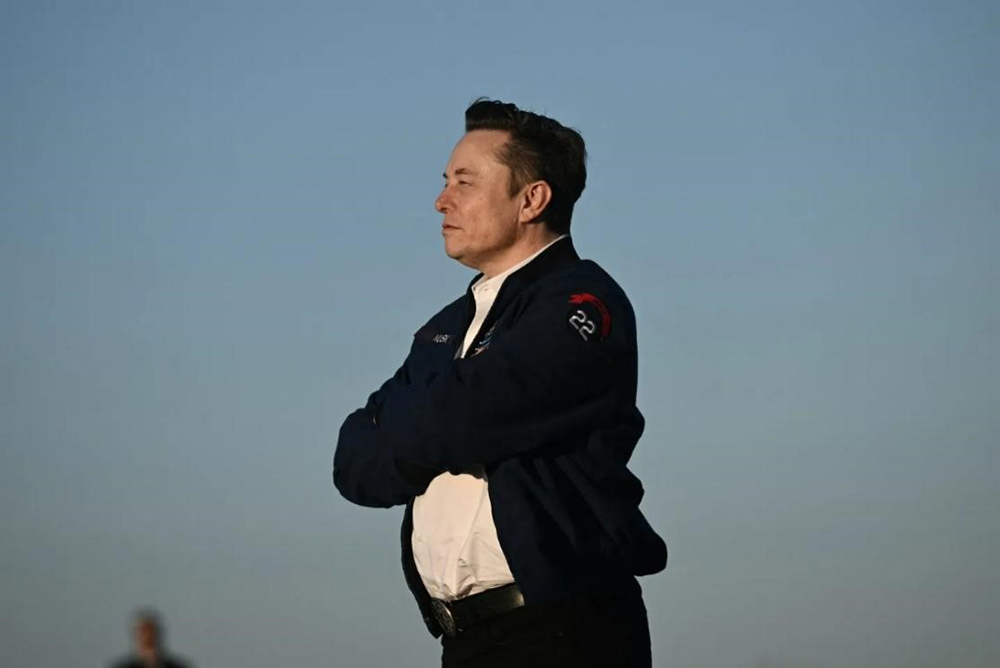
? 埃隆·馬斯克用特斯拉(Tesla)的無人駕駛出租車和人形機(jī)器人Optimus構(gòu)建烏托邦的愿景,,可能需要巨額資金支撐,。特斯拉去年下半年資本支出達(dá)63億美元,但相關(guān)資產(chǎn)的總價(jià)值僅增加49億美元,。對(duì)于沒有重大資產(chǎn)出售或減值的美國(guó)本土企業(yè)而言,,這兩個(gè)數(shù)字應(yīng)該是相吻合的,但特斯拉可能會(huì)受到其他因素的影響,。
盡管特斯拉投入巨資押注人工智能領(lǐng)域,,但投資者可能有理由質(zhì)疑其資金流向。據(jù)《金融時(shí)報(bào)》率先披露,,特斯拉的資本支出與對(duì)應(yīng)資產(chǎn)估值之間存在14億美元差額,,如果得不到合理解釋,這可能引發(fā)外界對(duì)這家電動(dòng)汽車巨頭內(nèi)部控制的擔(dān)憂,。
不過多位會(huì)計(jì)專家指出,,有合理的理由可以解釋特斯拉財(cái)務(wù)報(bào)表中可能未體現(xiàn)的差異,。圣母大學(xué)(Notre Dame)會(huì)計(jì)學(xué)教授、安永(Ernst & Young)前審計(jì)合伙人蒂姆·莫里森表示,,對(duì)于沒有重大資產(chǎn)交易或減值的美國(guó)本土企業(yè)而言,,這兩個(gè)數(shù)字應(yīng)該是相吻合的。當(dāng)然,,特斯拉的汽車銷往全球,,并在三大洲擁有生產(chǎn)基地。普華永道自2005年起一直負(fù)責(zé)特斯拉的財(cái)務(wù)報(bào)表審計(jì)工作,。
莫里森曾主要服務(wù)跨國(guó)制造企業(yè),,并在安永主持內(nèi)部檢查工作,負(fù)責(zé)審計(jì)質(zhì)量評(píng)估,。他表示:“若數(shù)字存在錯(cuò)誤,,這可能是暴露公司內(nèi)部控制問題的危險(xiǎn)信號(hào)?!?/p>
CFRA Research副總裁兼資深股票分析師加勒特·尼爾森指出,,這并非特斯拉的會(huì)計(jì)操作首次遭到質(zhì)疑。
他在寫給《財(cái)富》雜志的郵件中表示:“我們需要觀察普華永道或特斯拉是否會(huì)做出澄清,?!?/p>
特斯拉及普華永道均未回應(yīng)《財(cái)富》雜志的置評(píng)請(qǐng)求。
去年12月,,特斯拉的股價(jià)一度觸及美國(guó)大選之后近490美元的高點(diǎn),,但時(shí)至今日,特斯拉市值幾近腰斬,。隨著汽車銷量暴跌,,再加上馬斯克與唐納德·特朗普政府的合作令外界擔(dān)憂公司品牌會(huì)受到負(fù)面影響,并且分散他履行特斯拉首席執(zhí)行官職責(zé)的精力,,特斯拉的市值蒸發(fā)了近7,500億美元,。
不過,上周五,,在馬斯克召開全員緊急會(huì)議后,,特斯拉股價(jià)出現(xiàn)反彈??礉q者提到馬斯克利用人工智能構(gòu)建由特斯拉無人駕駛出租車和人形機(jī)器人Optimus組成的烏托邦愿景,,堅(jiān)信特斯拉將遠(yuǎn)不止是一家電動(dòng)汽車與電池儲(chǔ)能公司。
實(shí)現(xiàn)這個(gè)愿景需要巨額投資,。在今年1月的財(cái)報(bào)電話會(huì)上,,特斯拉首席財(cái)務(wù)官瓦伊巴夫·塔內(nèi)賈表示,今年應(yīng)該會(huì)維持113億美元的年度資本支出,但比2023年增加24億美元,。他表示,,公司在AI領(lǐng)域的累計(jì)投入剛突破50億美元大關(guān)。
塔內(nèi)賈強(qiáng)調(diào):“資本支出效率是我們的核心關(guān)注點(diǎn),。我們?cè)谕顿Y人工智能相關(guān)項(xiàng)目時(shí),都經(jīng)過精準(zhǔn)規(guī)劃,,以有效利用這些投資獲取即時(shí)收益,。”
出現(xiàn)14億美元缺口的原因
在特斯拉的年度現(xiàn)金流量表中,,這些支出作為“不動(dòng)產(chǎn),、廠房和設(shè)備”(PP&E)項(xiàng)目列報(bào)。去年下半年該項(xiàng)目增加63億美元,,與特斯拉投資者材料中披露的資本支出金額吻合,。
但同期公司PP&E總值(扣除折舊前)僅增長(zhǎng)49億美元。對(duì)于美國(guó)國(guó)內(nèi)企業(yè)而言,,我們預(yù)期這些數(shù)字應(yīng)該是相符的,。
莫里森證實(shí),沒有證據(jù)證明PP&E被出售,,且公司未對(duì)預(yù)期使用超一年的長(zhǎng)期資產(chǎn)確認(rèn)減值,。
然而,匯率波動(dòng)或是關(guān)鍵變量,。莫里森解釋稱,,若歐元兌美元像當(dāng)季一樣持續(xù)走弱,那么特斯拉德國(guó)工廠的資產(chǎn)就會(huì)貶值,。
他表示:“財(cái)務(wù)報(bào)表的其他項(xiàng)目中不會(huì)體現(xiàn)這種變化,。”
盡管《金融時(shí)報(bào)》認(rèn)為匯率因素似乎“無法解釋差異”,,因?yàn)樘厮估宸种牡拈L(zhǎng)期資產(chǎn)在美國(guó),,但莫里森仍堅(jiān)持認(rèn)為匯率有重大影響。
他表示:“匯率會(huì)引發(fā)各種異常波動(dòng),。完全追蹤這些影響極其困難,。”
最后,,他還指出,,特斯拉可能已經(jīng)處理了達(dá)到使用年限的資產(chǎn),如果這些資產(chǎn)不再出現(xiàn)在賬目中,,這種說法是合理的,。
企業(yè)金融研究所(Corporate Finance Institute)指出:“如果公司處置完全折舊資產(chǎn),資產(chǎn)的價(jià)值與累計(jì)折舊將從資產(chǎn)負(fù)債表移除,?!?/p>
簡(jiǎn)言之,,投資者暫無需對(duì)特斯拉的資本支出拉響警報(bào)?!督鹑跁r(shí)報(bào)》指出,,特斯拉坐擁365億美元現(xiàn)金且不發(fā)放股息,因此它去年認(rèn)為有必要發(fā)行39億美元新債,,這似乎有些反常,。但莫里森認(rèn)為,對(duì)一家押注未來增長(zhǎng)的公司而言,,此類操作具有合理性,。
標(biāo)普資本智商(S&P Cap IQ)的數(shù)據(jù)顯示,盡管近期股價(jià)下挫,,特斯拉未來12個(gè)月的預(yù)期市盈率仍在90倍左右,。換一種委婉的說法,多頭最好堅(jiān)信馬斯克的豪賭終將獲得豐厚回報(bào),。 (財(cái)富中文網(wǎng))
譯者:劉進(jìn)龍
審校:汪皓
? 埃隆·馬斯克用特斯拉(Tesla)的無人駕駛出租車和人形機(jī)器人Optimus構(gòu)建烏托邦的愿景,可能需要巨額資金支撐,。特斯拉去年下半年資本支出達(dá)63億美元,但相關(guān)資產(chǎn)的總價(jià)值僅增加49億美元,。對(duì)于沒有重大資產(chǎn)出售或減值的美國(guó)本土企業(yè)而言,,這兩個(gè)數(shù)字應(yīng)該是相吻合的,但特斯拉可能會(huì)受到其他因素的影響,。
盡管特斯拉投入巨資押注人工智能領(lǐng)域,,但投資者可能有理由質(zhì)疑其資金流向。據(jù)《金融時(shí)報(bào)》率先披露,,特斯拉的資本支出與對(duì)應(yīng)資產(chǎn)估值之間存在14億美元差額,,如果得不到合理解釋,這可能引發(fā)外界對(duì)這家電動(dòng)汽車巨頭內(nèi)部控制的擔(dān)憂,。
不過多位會(huì)計(jì)專家指出,,有合理的理由可以解釋特斯拉財(cái)務(wù)報(bào)表中可能未體現(xiàn)的差異。圣母大學(xué)(Notre Dame)會(huì)計(jì)學(xué)教授,、安永(Ernst & Young)前審計(jì)合伙人蒂姆·莫里森表示,,對(duì)于沒有重大資產(chǎn)交易或減值的美國(guó)本土企業(yè)而言,,這兩個(gè)數(shù)字應(yīng)該是相吻合的。當(dāng)然,,特斯拉的汽車銷往全球,,并在三大洲擁有生產(chǎn)基地。普華永道自2005年起一直負(fù)責(zé)特斯拉的財(cái)務(wù)報(bào)表審計(jì)工作,。
莫里森曾主要服務(wù)跨國(guó)制造企業(yè),,并在安永主持內(nèi)部檢查工作,負(fù)責(zé)審計(jì)質(zhì)量評(píng)估,。他表示:“若數(shù)字存在錯(cuò)誤,,這可能是暴露公司內(nèi)部控制問題的危險(xiǎn)信號(hào)?!?/p>
CFRA Research副總裁兼資深股票分析師加勒特·尼爾森指出,,這并非特斯拉的會(huì)計(jì)操作首次遭到質(zhì)疑。
他在寫給《財(cái)富》雜志的郵件中表示:“我們需要觀察普華永道或特斯拉是否會(huì)做出澄清,?!?/p>
特斯拉及普華永道均未回應(yīng)《財(cái)富》雜志的置評(píng)請(qǐng)求。
去年12月,,特斯拉的股價(jià)一度觸及美國(guó)大選之后近490美元的高點(diǎn),,但時(shí)至今日,特斯拉市值幾近腰斬,。隨著汽車銷量暴跌,,再加上馬斯克與唐納德·特朗普政府的合作令外界擔(dān)憂公司品牌會(huì)受到負(fù)面影響,并且分散他履行特斯拉首席執(zhí)行官職責(zé)的精力,,特斯拉的市值蒸發(fā)了近7,500億美元,。
不過,上周五,,在馬斯克召開全員緊急會(huì)議后,,特斯拉股價(jià)出現(xiàn)反彈??礉q者提到馬斯克利用人工智能構(gòu)建由特斯拉無人駕駛出租車和人形機(jī)器人Optimus組成的烏托邦愿景,,堅(jiān)信特斯拉將遠(yuǎn)不止是一家電動(dòng)汽車與電池儲(chǔ)能公司。
實(shí)現(xiàn)這個(gè)愿景需要巨額投資,。在今年1月的財(cái)報(bào)電話會(huì)上,,特斯拉首席財(cái)務(wù)官瓦伊巴夫·塔內(nèi)賈表示,今年應(yīng)該會(huì)維持113億美元的年度資本支出,,但比2023年增加24億美元,。他表示,公司在AI領(lǐng)域的累計(jì)投入剛突破50億美元大關(guān),。
塔內(nèi)賈強(qiáng)調(diào):“資本支出效率是我們的核心關(guān)注點(diǎn),。我們?cè)谕顿Y人工智能相關(guān)項(xiàng)目時(shí),,都經(jīng)過精準(zhǔn)規(guī)劃,以有效利用這些投資獲取即時(shí)收益,?!?/p>
出現(xiàn)14億美元缺口的原因
在特斯拉的年度現(xiàn)金流量表中,這些支出作為“不動(dòng)產(chǎn),、廠房和設(shè)備”(PP&E)項(xiàng)目列報(bào),。去年下半年該項(xiàng)目增加63億美元,與特斯拉投資者材料中披露的資本支出金額吻合,。
但同期公司PP&E總值(扣除折舊前)僅增長(zhǎng)49億美元,。對(duì)于美國(guó)國(guó)內(nèi)企業(yè)而言,我們預(yù)期這些數(shù)字應(yīng)該是相符的,。
莫里森證實(shí),,沒有證據(jù)證明PP&E被出售,且公司未對(duì)預(yù)期使用超一年的長(zhǎng)期資產(chǎn)確認(rèn)減值,。
然而,,匯率波動(dòng)或是關(guān)鍵變量。莫里森解釋稱,,若歐元兌美元像當(dāng)季一樣持續(xù)走弱,,那么特斯拉德國(guó)工廠的資產(chǎn)就會(huì)貶值。
他表示:“財(cái)務(wù)報(bào)表的其他項(xiàng)目中不會(huì)體現(xiàn)這種變化,?!?/p>
盡管《金融時(shí)報(bào)》認(rèn)為匯率因素似乎“無法解釋差異”,因?yàn)樘厮估宸种牡拈L(zhǎng)期資產(chǎn)在美國(guó),,但莫里森仍堅(jiān)持認(rèn)為匯率有重大影響,。
他表示:“匯率會(huì)引發(fā)各種異常波動(dòng)。完全追蹤這些影響極其困難,?!?/p>
最后,他還指出,,特斯拉可能已經(jīng)處理了達(dá)到使用年限的資產(chǎn),如果這些資產(chǎn)不再出現(xiàn)在賬目中,,這種說法是合理的,。
企業(yè)金融研究所(Corporate Finance Institute)指出:“如果公司處置完全折舊資產(chǎn),資產(chǎn)的價(jià)值與累計(jì)折舊將從資產(chǎn)負(fù)債表移除,?!?/p>
簡(jiǎn)言之,投資者暫無需對(duì)特斯拉的資本支出拉響警報(bào),?!督鹑跁r(shí)報(bào)》指出,,特斯拉坐擁365億美元現(xiàn)金且不發(fā)放股息,因此它去年認(rèn)為有必要發(fā)行39億美元新債,,這似乎有些反常,。但莫里森認(rèn)為,對(duì)一家押注未來增長(zhǎng)的公司而言,,此類操作具有合理性,。
標(biāo)普資本智商(S&P Cap IQ)的數(shù)據(jù)顯示,盡管近期股價(jià)下挫,,特斯拉未來12個(gè)月的預(yù)期市盈率仍在90倍左右,。換一種委婉的說法,多頭最好堅(jiān)信馬斯克的豪賭終將獲得豐厚回報(bào),。 (財(cái)富中文網(wǎng))
譯者:劉進(jìn)龍
審校:汪皓
? Elon Musk’s vision to usher in a utopia powered by Tesla robotaxis and the company’s humanoid robot, Optimus, will likely take significant cash. Tesla spent $6.3 billion in capex during the second half of last year, but the gross value of the company’s relevant assets only increased by $4.9 billion. Those numbers should tally for domestic companies without any major asset sales or impairments, but other factors could be at play for Tesla.
Tesla is making big bets on AI, but investors might have a reason to question where the money is going. If left unexplained, a $1.4 billion discrepancy between the firm’s capital expenditures and the valuation of the assets that cash was spent on, first reported by the Financial Times, could spark concerns about internal controls at Elon Musk’s electric vehicle giant.
Several accounting experts, however, say there are plausible justifications for the variance that might not show up on Tesla’s financial statements. You would expect the relevant numbers to add up for a domestic company with no big asset sales or impairments, said Tim Morrison, an accounting professor at Notre Dame and former audit partner at Ernst & Young. Tesla, of course, sells cars around the world and has factories on three continents. PwC has audited Tesla’s financial statements since 2005.
“If they had the numbers incorrect, then that would be a red flag related to controls,” said Morrison, who worked primarily with multinational manufacturing companies and led internal inspections to assess audit quality at EY.
This isn’t the first time Tesla’s accounting practices have been questioned, noted Garrett Nelson, a vice president and senior equity analyst at CFRA Research.
“We’ll have to see whether PwC or the company provide clarification,” he wrote in an email to Fortune.
Tesla and the Big Four firm did not respond to a request from Fortune for comment.
Tesla shares have lost roughly half their value since their post-election high near the $490 mark in December. The company has shed nearly $750 billion in market cap amid plummeting sales and fears Musk’s work with President Donald Trump’s White House is damaging the brand and distracting him from his role as CEO of Tesla.
The stock rallied Friday, though, after Musk held an emergency all-hands meeting with employees. Bullish investors believe Tesla will be much more than an EV and battery storage company, citing Musk’s vision of using AI to usher in a utopia powered by Tesla robotaxis and the company’s humanoid robot, Optimus.
Executing that plan will presumably require significant investment. On the company’s latest earnings call in January, CFO Vaibhav Taneja said Tesla’s $11.3 billion in annual capex—up $2.4 billion from 2023—should remain flat this year. The company’s cumulative AI-related spend, he noted, had just surpassed the $5 billion mark.
“Capex efficiency is something we are extremely focused on,” Taneja said. “While we have invested in AI-related initiatives, we have done so in a very targeted manner to utilize the spend to get immediate benefits.”
Accounting for a $1.4 billion mystery
That spending shows up on the annual statement of cash flows as purchases of property, plant, and equipment, or PP&E. In the second half of last year, that amount grew by $6.3 billion, the same value for capex that Tesla reported in its slide deck for investors.
But the gross value of the company’s PP&E, or its worth before accounting for depreciation, only increased $4.9 billion in that span. Again, for a domestic company, you would expect those numbers to tally.
There’s no evidence any PP&E was sold, Morrison confirmed, and the company did not recognize any impairments to its “l(fā)ong-lived assets,” which Tesla expects to use for more than one year.
Foreign currency changes, however, can throw everything off. If the euro weakens relative to the dollar like it did during the period in question, Morrison explained, assets at the company’s facilities in Germany are marked down.
“You’re not going to see [it] anywhere else on the financial statements,” he said.
While the Financial Times said foreign exchange appeared “unlikely to explain the gap,” citing that four-fifths of Tesla’s long-lived assets are in the U.S., Morrison said it could still explain a significant chunk.
“Foreign currency can do lots of weird things,” he said, “and it’s really hard to fully track that.”
Finally, he also noted Tesla could have gotten rid of assets that had reached the end of their useful lives, in which case it would make sense if they are no longer on the books.
“If the fully depreciated asset is disposed of, the asset’s value and accumulated depreciation will be written off from the balance sheet,” according to an explanation from the Corporate Finance Institute.
In short, it may not be time for investors to sound an alarm about Tesla’s capex just yet. As the Financial Times noted, it may seem odd Tesla felt the need to raise $3.9 billion in new debt last year, given the company is sitting on a $36.5 billion cash pile and doesn’t pay a dividend. Still, that sort of behavior may be reasonable for a company banking on future growth, Morrison said.
Despite the stock’s recent decline, Tesla shares still trade at roughly 90 times the company’s projected earnings for the next 12 months, according to S&P Cap IQ estimates. To put it mildly, bulls better believe Musk’s investments will pay off in a big way.






